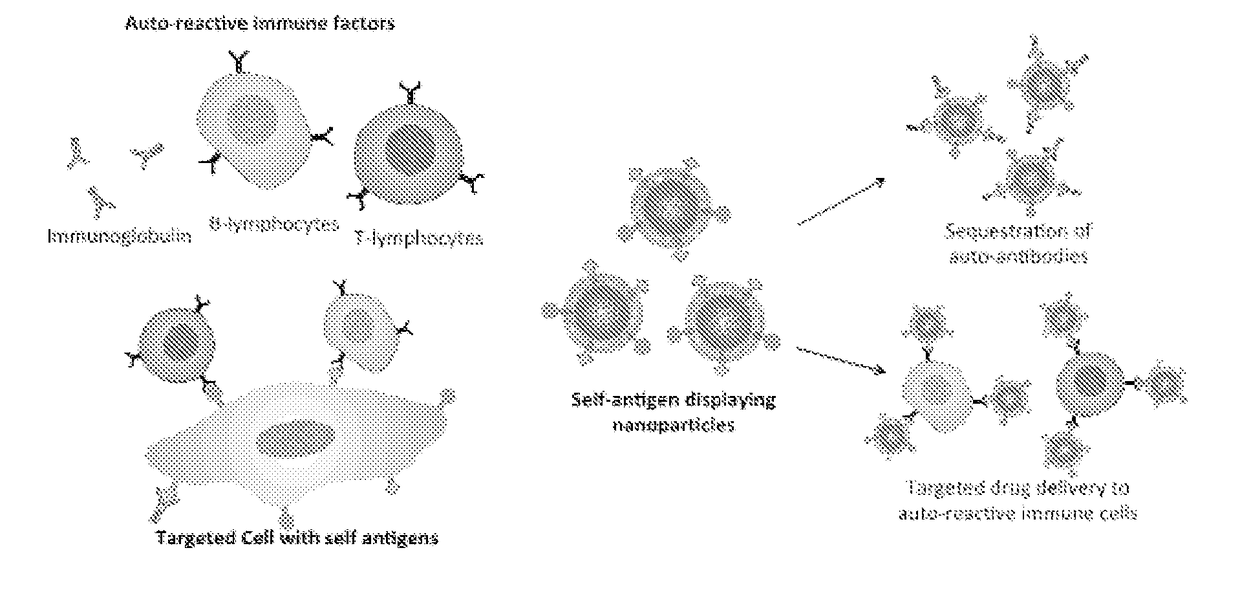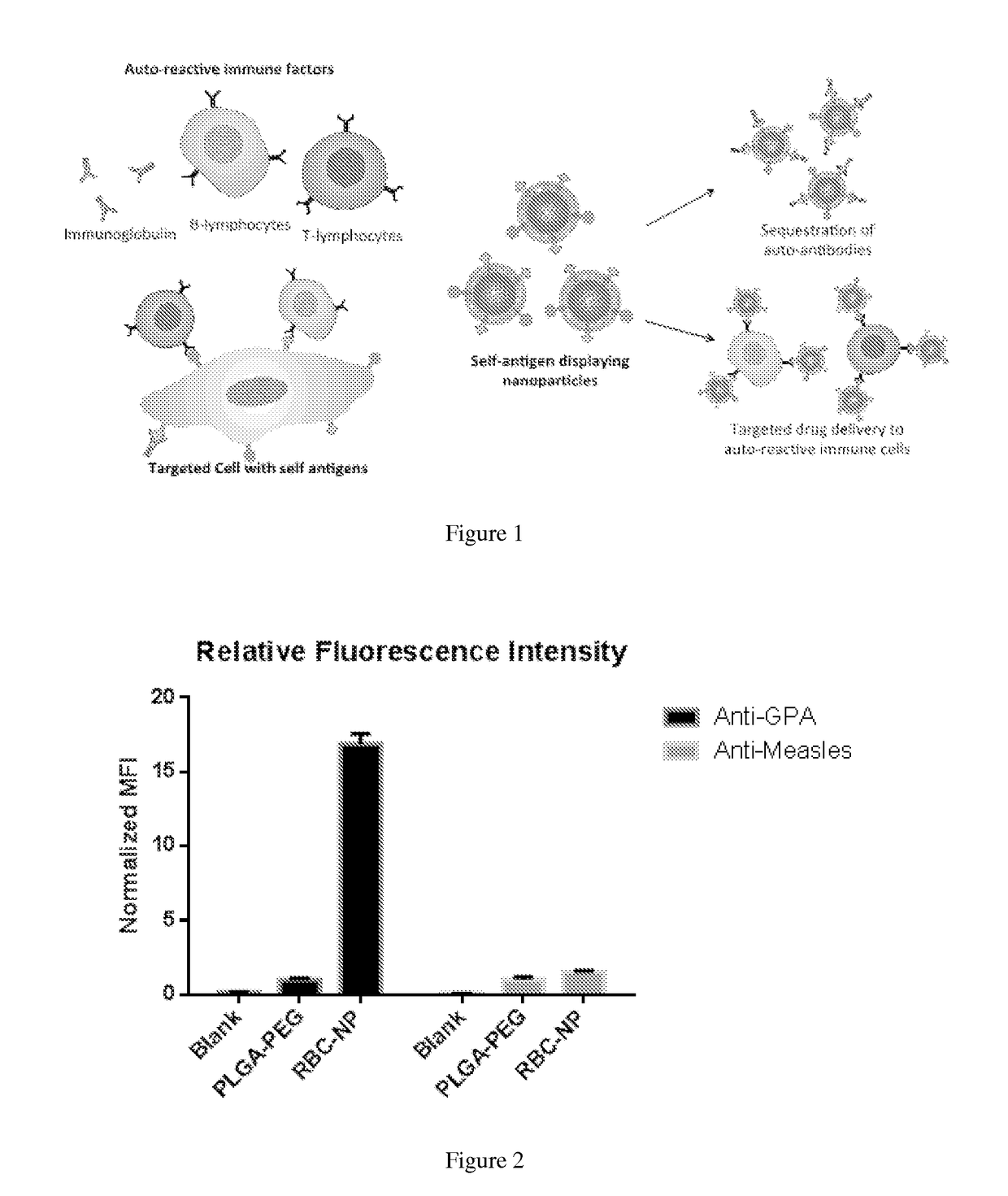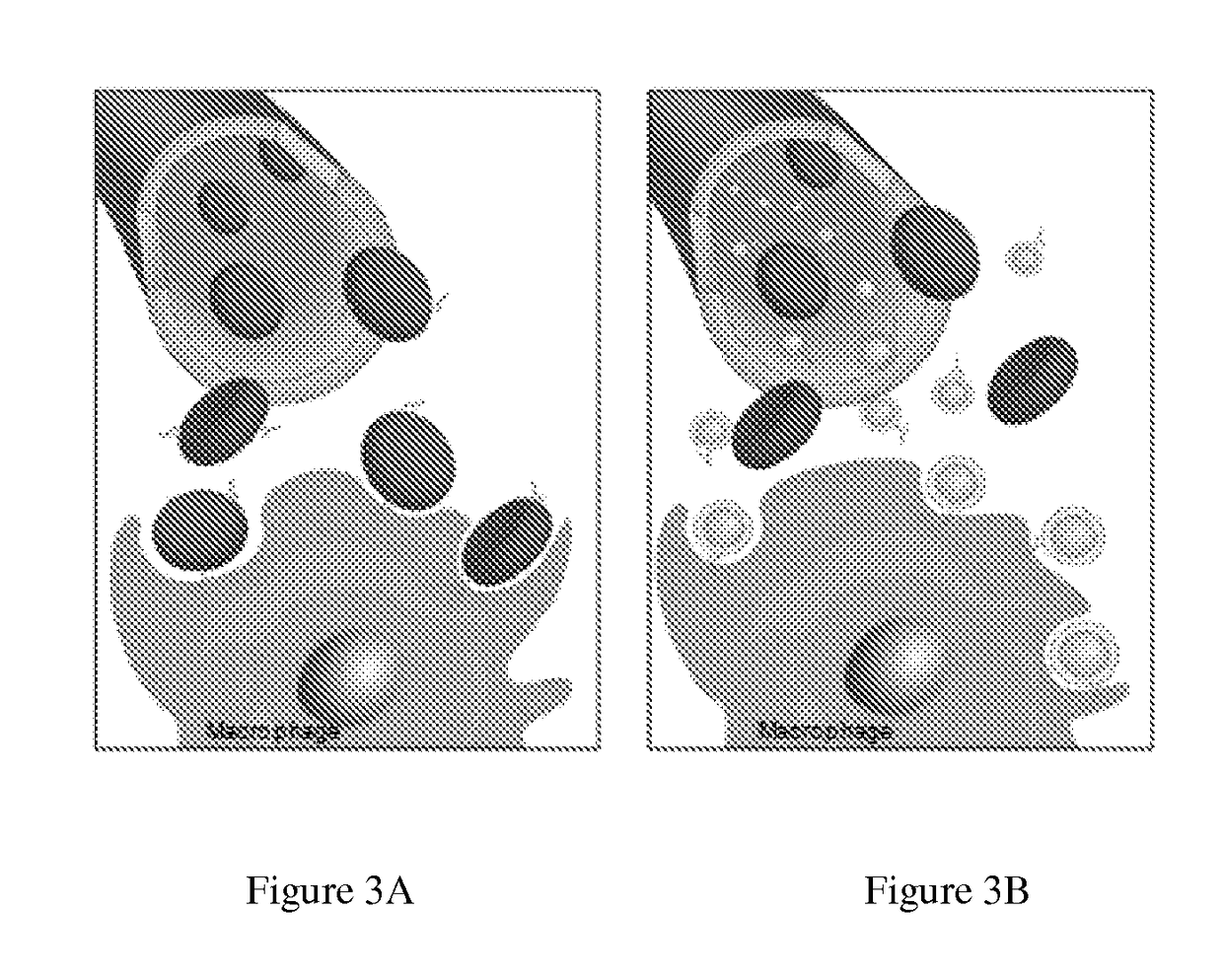Self-Antigen Displaying Nanoparticles Targeting Auto-Reactive Immune Factors and Uses Thereof
a technology of auto-reactive immune factors and nanoparticles, which is applied in the direction of antibody medical ingredients, carrier-bound antigen/hapten ingredients, capsule delivery, etc., can solve the problem of not having specific treatment options available to disrupt auto-self destruction, and achieve the effect of normalizing immune regulation and reducing anemia symptoms
- Summary
- Abstract
- Description
- Claims
- Application Information
AI Technical Summary
Benefits of technology
Problems solved by technology
Method used
Image
Examples
example 1
Clearance of Pathologic Antibodies Using Biomimetic Nanoparticles
[0154]Pathologic antibodies have been demonstrated to play a key role in type-II immune hypersensitivity reactions, resulting in the destruction of healthy tissues and leading to considerable morbidity for the patient. Unfortunately, current treatments present significant iatrogenic risk while still falling short for many patients in achieving clinical remission. In the present work the capability of target cell membrane-coated nanoparticles was explored to abrogate the effect of pathologic antibodies in efforts to minimize disease burden, without the need for drug-based immune suppression. Inspired by antibody-driven pathology, intact red blood cell (RBC) membrane stabilized by biodegradable polymeric nanoparticle cores was used to serve as an alternative target for pathologic antibodies in an antibody-induced anemia disease model. Through both in vitro and in vivo studies, efficacy of RBC membrane-cloaked nanoparticl...
example 2
Materials and Methods
[0167]Preparation of RBC Antibody Nanosponges (RBC-ANS). RBC-ANS were prepared following previously described methods (21). Briefly, ˜100 nm PLGA polymeric cores were prepared using 0.67 dL / g carboxy-terminated 50:50 poly(DL-lactide-co-glycolide) (LACTEL Absorbable Polymers, Cupertino, Calif.) in a nanoprecipitation process. The PLGA polymer was first dissolved in acetone at a 10 mg / mL concentration. 1 mL of the solution was then added rapidly to 3 mL of water. For fluorescently labeled formulations, 1,1′-dioctadecyl-3,3,3′,3′-tetramethylindodicarbocyanine perchlorate (DiD, excitation / emission=644 / 665 nm, Life Technologies) was loaded into the polymeric cores at 0.1 wt %. The mixture was then stirred in open air for 1 hr and placed in vacuum for another 3 hr. The resulting nanoparticle solution was filtered using Amicon Ultra-4 Centrifugal Filters with a molecular weight cutoff of 10 kDa (Millipore, Billerica, Mass.). RBC membrane coating was then completed by f...
PUM
| Property | Measurement | Unit |
|---|---|---|
| diameter | aaaaa | aaaaa |
| diameter | aaaaa | aaaaa |
| diameter | aaaaa | aaaaa |
Abstract
Description
Claims
Application Information
 Login to View More
Login to View More - R&D
- Intellectual Property
- Life Sciences
- Materials
- Tech Scout
- Unparalleled Data Quality
- Higher Quality Content
- 60% Fewer Hallucinations
Browse by: Latest US Patents, China's latest patents, Technical Efficacy Thesaurus, Application Domain, Technology Topic, Popular Technical Reports.
© 2025 PatSnap. All rights reserved.Legal|Privacy policy|Modern Slavery Act Transparency Statement|Sitemap|About US| Contact US: help@patsnap.com



